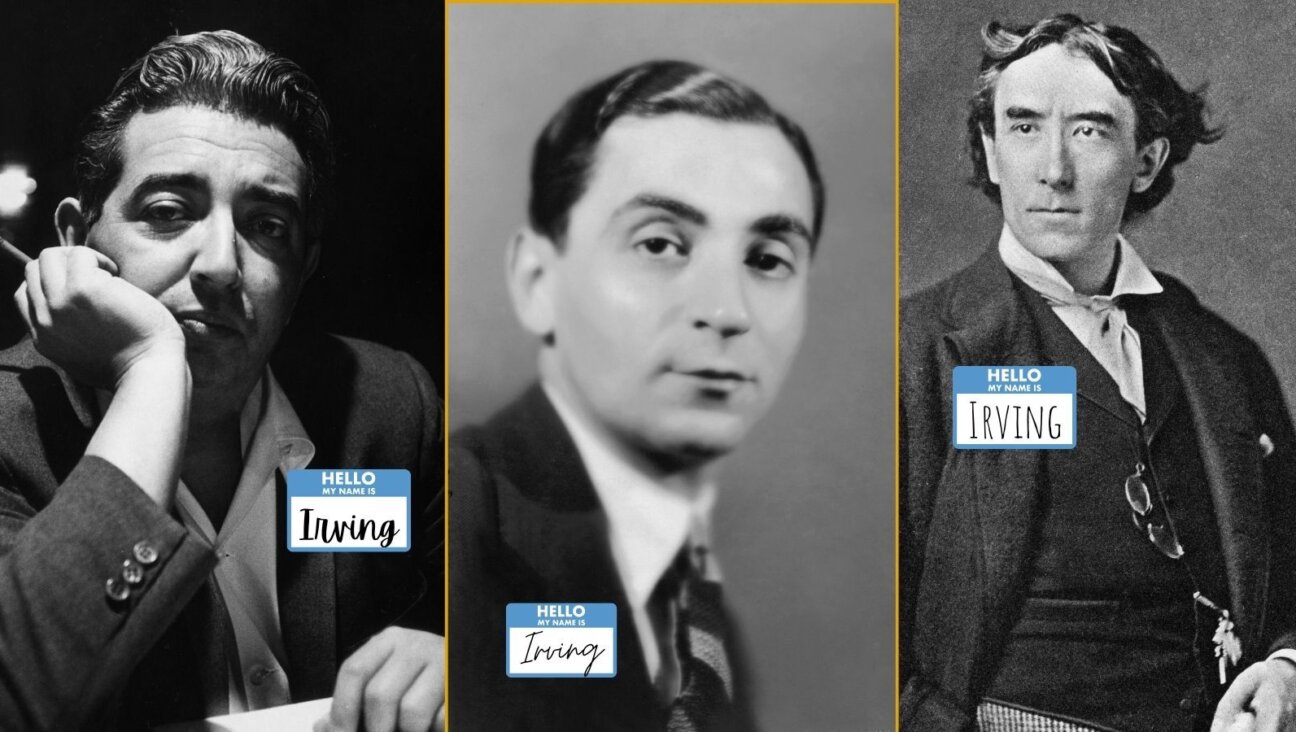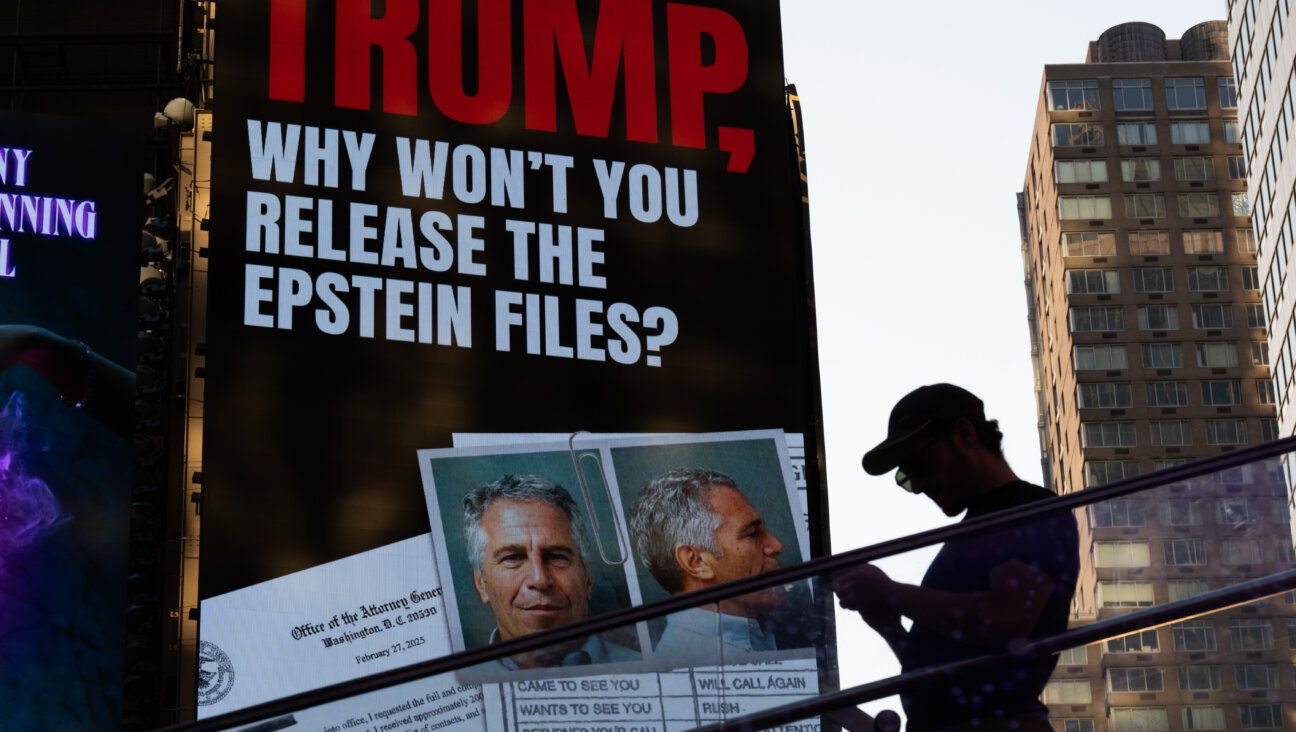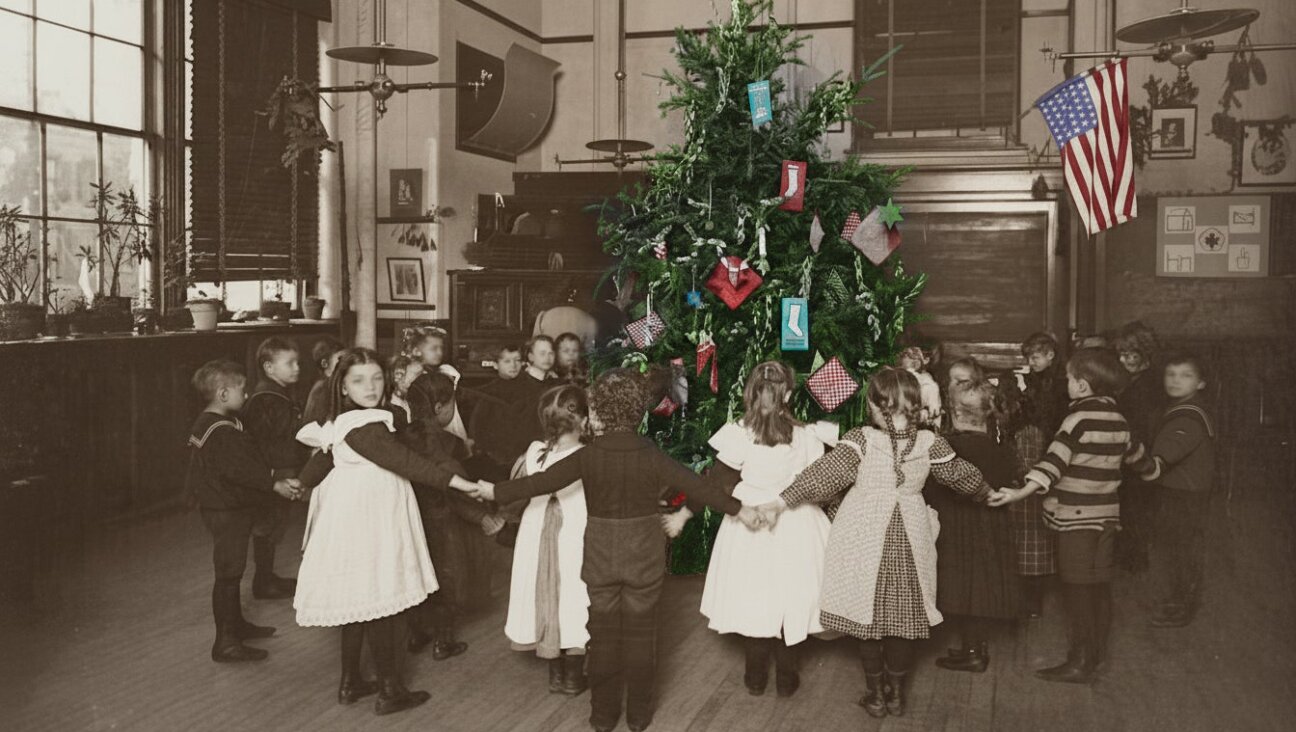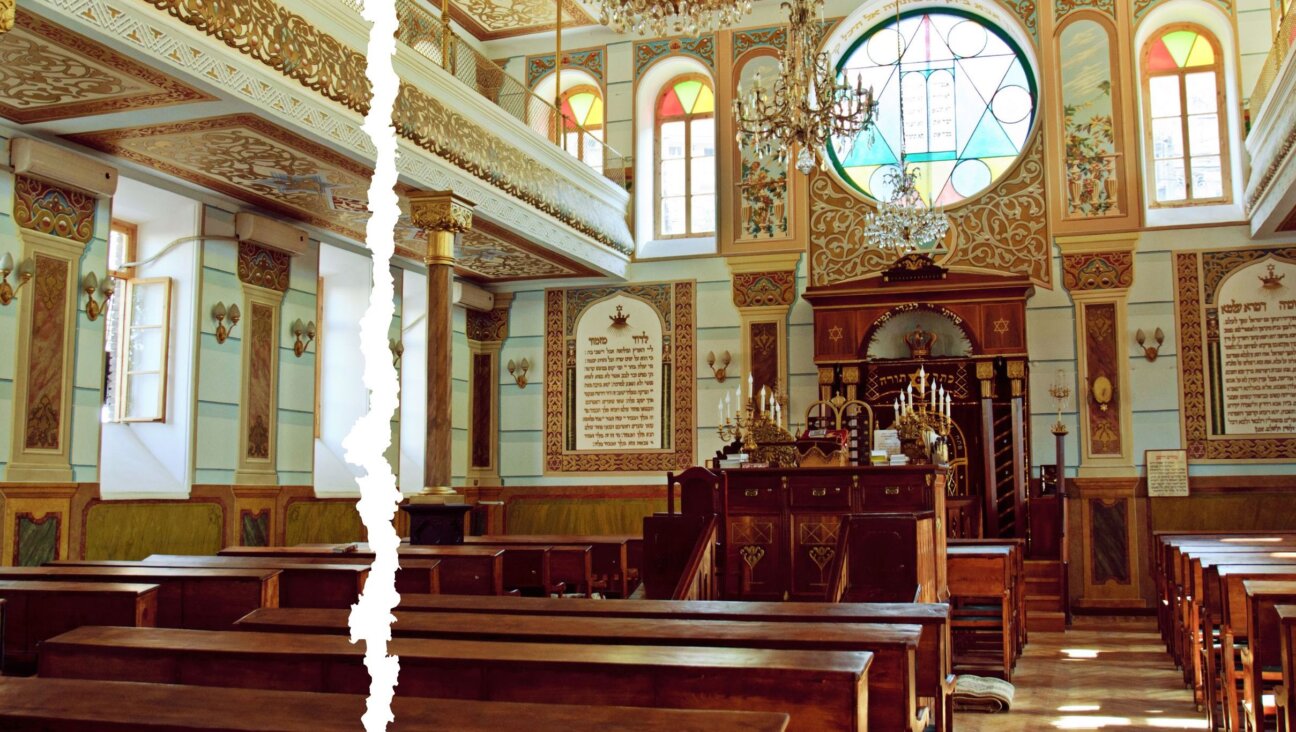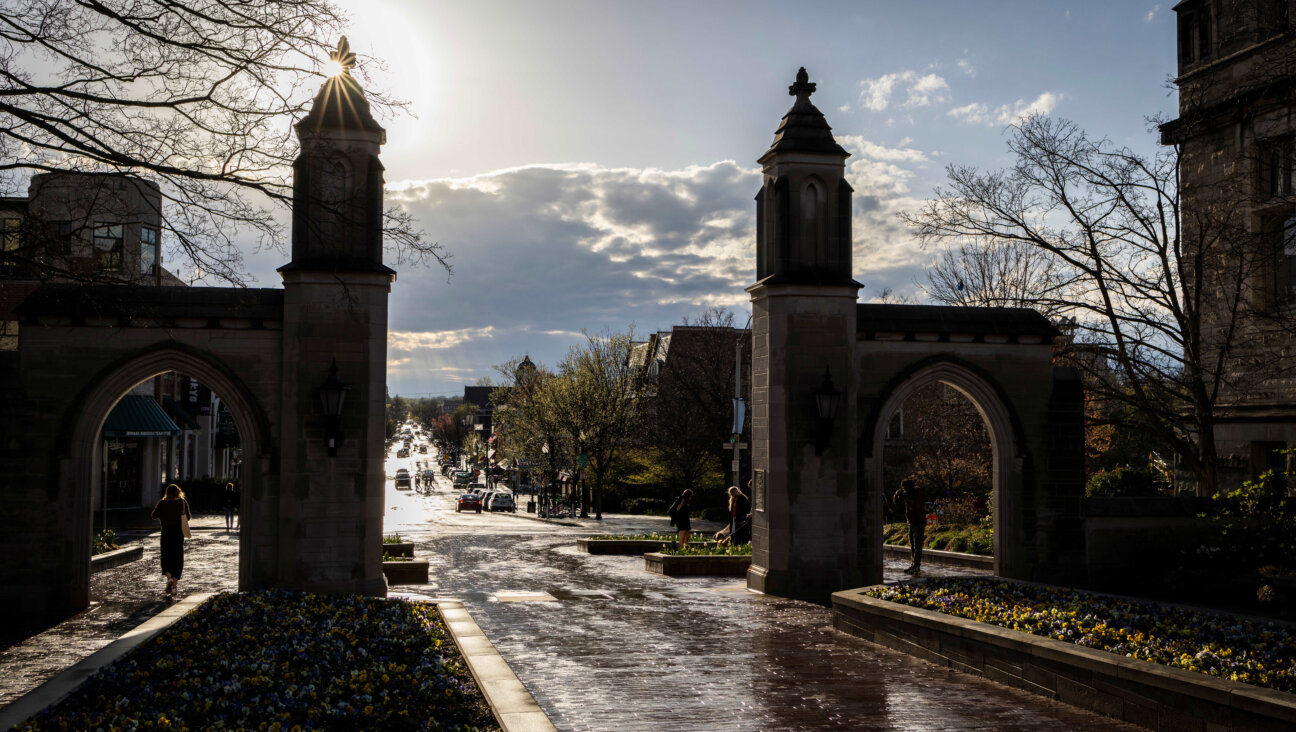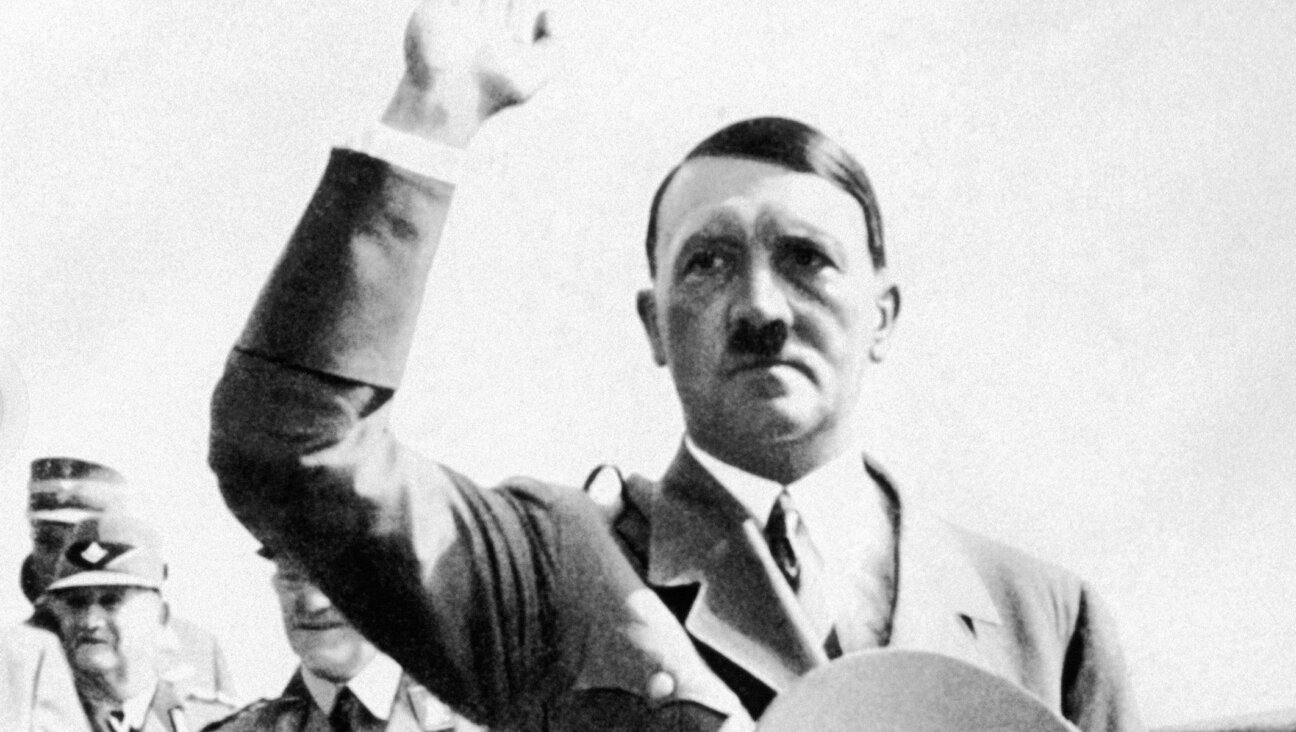Abrom Kaplan’s Cajun Dream

Graphic by Angelie Zaslavsky

Image by University of Texas Libraries, The University of Texas at Austin
Driving west on I-10 out of New Orleans, you plunge almost immediately into a world made more of water than of land. First you cross the Bonnet Carre Spillway, which channels overflowing river water into Lake Pontchartrain. Later, in Baton Rouge, you rattle 175 feet above the Mississippi on a rickety cantilever bridge. And then, deep in the region called Acadiana, you cross one of two parallel highway bridges that rise above the eerie Atchafalaya Swamp. Sloping and bending, they stretch for 18.2 miles, past bayous and basins and a body of water called Whiskey Bay. “All the world is a narrow bridge,” I thought, “and the most important thing is not to fear at all.”
Perhaps the words of Ukrainian-born Hasidic leader Nachman of Breslov do not belong in a Louisiana swamp. But that could also be said of my destination: a small town that is known as “the gateway to the coastal wetlands” and as “the most Cajun place on earth”: Kaplan, La.
The existence of a town with my last name, or any Jewish name, 40 minutes southwest of Lafayette had intrigued me since I first read about it in William Least Heat-Moon’s autobiographical travelogue, “Blue Highways.” Vermilion Parish, where Kaplan is located, is not a place where one expects to find Jews; the area is known for its decidedly nonkosher food and its emphatically Cajun culture. The logo of the parish’s tourist commission is a crawfish sitting in a pot and playing an accordion, under the words “Ca Fait Chaud!” (“It’s hot!”) But there Kaplan is: a town of fewer than 5,000 people, with modest brick homes on a neat grid, vacant storefronts, a Piggly Wiggly and a Family Dollar.

Abrom Kaplan Image by Freeland Archive, Acadia Parish Library
Kaplan’s founder, Abrom Kaplan, was a poor immigrant turned rice mogul. Born in Most, Poland, in 1872, he arrived in New York when he was 15. Nearly penniless, he was abandoned at the dock by the acquaintance he thought would take him in. He wandered until he happened upon a rabbi and distiller who worked for his father back in Most. With this man’s help, Kaplan acquired a stock of trinkets and household items. He peddled them on the east end of the Brooklyn Bridge, then he traveled north and sold his wares along the back roads of Connecticut. He soon heard about a “new Southwestern country,” according to an article about him in a Vermilion Parish newspaper. By 18 he had relocated to Crowley, La.
Kaplan quickly became a financial success and a leading citizen, involved in practically every aspect of local commerce, with hundreds of thousands of acres of farmland to his name. He helped countless immigrants settle in America, and backed an array of local civic and religious institutions. He was an agricultural pioneer and a pillar of several communities, including the town that would eventually bear his name.
Jews have lived in Louisiana since the early 18th century, but most of them settled in New Orleans. A handful of Jewish merchants, bankers and developers had already reached the rural southwestern part of the state when Kaplan arrived in Crowley in the 1890s. Of all of them, however, Kaplan was the one who thrived; he had the widest interests and influences. He was the only one to have a town named after him.
Yet aside from some local newspaper articles, a grade-school history curriculum in local schools and a few brief mentions in histories of the Jewish South, Kaplan is largely unremembered. I wondered why this American Jewish success story with a Cajun twist was so obscure.
In April I visited the University of Louisiana at Lafayette, where Kaplan’s personal papers are held in an archive — a singular life contained in 12 boxes on two rolling carts. In 54 diaries crammed with delicate but excitable script occasionally interrupted by arithmetic, Kaplan kept detailed records of his days. The pages are filled with business: trains, cars, dams, canals, meetings, and constant rushing among Lake Charles, Estherwood, Abbeville, Gueydan and New Orleans. The margins contain weather reports: fine day, beautiful day, “clody day,” “no Raine,” “had a good Raine.” (Kaplan became fluent
in English on his southward journey, but he still had trouble spelling certain words.)
The diary entries center largely on the rice business. Early settlers had planted what they called “Providence Rice,” tossing it in the wetlands and hoping for the best. Kaplan was not the first to modernize this process, but he came up with a crucial innovation in flood control that let in bayou water and kept out salt water, which would destroy the crop. Kaplan’s ingenuity helped create the “world’s largest irrigation system,” wrote Whitney Lynn Broussard, a former rice industry executive whose 1999 master’s thesis at the University of Louisiana at Lafayette chronicles Kaplan’s early years. “It is totally beyond comprehension,” Broussard wrote, “how any one man could accomplish so much in such a short time.”
Kaplan lost most of his money when the Depression crippled an already faltering rice industry. But he continued with his land development companies, bank and other enterprises. He also turned to new opportunities, primarily oil wells. It seemed Kaplan took on new endeavors as nimbly and frequently as a juggler accepts each ball, pin or unexpected object thrown his way.
Kaplan was, at one point, southwestern Louisiana’s largest taxpayer. He represented the interests of rice farmers in meetings with prominent Louisiana legislators. His expertise was also valued on a national scale; in 1922 the secretary of agriculture, Henry C. Wallace, invited him to Washington, where he attended a conference and dined at the White House with President Harding and his Cabinet. Sometimes, political battles turned physical: A controversial dam that Kaplan backed was blown up, supposedly by disgruntled locals who opposed the project. But in the diaries, these bits of drama are few and far between.
Personal information about Kaplan is even scarcer, appearing only when it intersects with financial or legal matters. In 1894, Kaplan gave some Crowley real estate to Miss Rebecca Lichtenstein of New Orleans. Documents state that the house was an “ante nuptial donation,” “by reason of the affection and love” he had for her. (They would have one son, Irving, and Kaplan would marry once more, after Lichtenstein’s death.)
Faint rays of personality shine through Kaplan’s workaday prose. I could imagine him as he appeared in one of the few photographs I encountered, wearing a high starched collar and a funny little striped bow tie, addressing a business associate in his peculiar manner, such as in one diary entry: “Frank, there is as much probability of their releasing the mortgage as my jumping through the window.”
As I read, I searched for any reference to his Jewishness, wanting to get a sense of how Kaplan viewed his religious or cultural heritage. He saved an announcement for a talk by Rabbi Jacob Rader Marcus at Temple Sinai in New Orleans on the expulsion of Jews from Spain in 1492. He clipped a few news articles about Hitler’s rise to power. He noted in a diary entry on Thursday, March 8, 1915, that he’d been to a New York “farming settlement. Settled altogether by Jews between 50 and 60 families and about 10 or 15 Italian families.” At the school, which is “maintained by the Jew settlement,” “Strange as it seems, I distinguished everyone [sic] of the Italian children from the Jews.”
Kaplan appeared to have maintained lifelong ties to Jewish people and institutions. He was an officer of the Jewish Cemetery Association of Lafayette. His first wife belonged to the Crowley Chapter of the Order of the Eastern Star and to the Jewish Sisterhood at Congregation Gates of Prayer, in New Iberia. (I later found that humble brick synagogue just off the town’s carefully restored historic Main Street.)
But there was no hint of what Kaplan thought or felt about being Jewish.
And in all the fragile letters, the leather booklets full of promissory notes and insurance information, and the telegrams, telegraphs and hotel bills, I got no sense of what Kaplan felt about the trajectory of his own life. He had traveled so far, to what must have struck him at first as an alien landscape. As a foreigner, a religious and ethnic minority speaking a language learned in his late teens, he had built a life — an empire — on understanding complex technologies and social situations for which his upbringing provided no preparation. I found these achievements remarkable. If Kaplan did, too, he did not show it.
Today, the most visible proof of Kaplan’s reach is the town he built. On June 9, 1902, the New Orleans Daily Picayune announced, “Another Town Added to SW LA.” In 1903, Kaplan officially became a village. It was exactly 100 years after the 1803 Louisiana Purchase and the dissolution of Code Noir, the French rule that prohibited Jews from living in French-owned territory and regulated the lives of slaves and non-Catholics.
At enormous personal expense, Kaplan persuaded railroad officials to extend the tracks from Gueydan to Kaplan and Abbeville, facilitating the area’s development. From a tent city, Kaplan grew to a shipping hub and acquired a post office, a Catholic church (built on land that Kaplan donated), a school, a telegraph company, a newspaper and a mayor.
Some of this history was chronicled in the Musee de Kaplan, in the center of the town, which I visited on my trip to Vermilion Parish. There were exhibits on Catholicism; Attakapas Indians and Acadian settlers; farming and Mardi Gras, among other topics. A few scrapbooks contained newspaper clippings on Kaplan.
I asked the smartly dressed woman at the front desk how the town of Kaplan was faring these days. Shirley Schexnayder has lived here for 65 years, and she thinks the town has improved: She remembered when the streets were unpaved. But, she said, only one of her three children still lives here. There was no money in farming anymore, so many young people moved away. I wondered whether immigrants — maybe some of them ambitious strivers like Kaplan — had come to fill the void. There were some once, she said; the farmers brought them in. She didn’t know if they had stayed.
She was not aware of any Jews here, either. Maybe a long time ago, she said. She did not seem surprised that I asked (no one I met in Louisiana seemed easily surprised by anything), but I could tell it was an unusual question all the same.
I asked if Kaplan residents knew, or cared, about the town’s origins. If anyone does, it’s the younger generation, Schexnayder told me. But they’re too tired from commuting to make this town boom again.
There, in this typically declining American town, I suddenly understood why, as Broussard noted in his thesis: “Nothing has ever been written on Abrom Kaplan.” Neither of the two groups likely to appreciate his story, Louisianans and Jews, had reason to look into it. The locals took pride in their Cajun celebrations, like their famous Bastille Day festival, but not in their town’s origins. Jews seeking examples of successful immigrants could turn to the histories of major Jewish population centers. Learning about Abrom Kaplan required a trip to the archives. But even that opportunity was not available until the 1990s, when Kaplan’s papers were finally cataloged. It was that simple: He was obscure because no one knew about him, and no one knew about him because time had rendered him obscure.
I understood, too, that it would be easier to get a sense of Kaplan’s life beyond his namesake town. In the late 19th and early 20th centuries, the distinct municipalities of this region seem to have functioned, socially, like one vast community. When Kaplan died, for example, services were held at the Crowley Masonic Lodge, regularly used as a synagogue by the town’s Jews. He was buried 25 miles away, in Lafayette.
I went to Lafayette’s Jewish cemetery, where the gate was closed with a nail, allowing visitors to let themselves in and then shut themselves up among the graves and gloomy trees and sodden grass. I wandered around till I saw a large headstone that read simply, in capital letters, Kaplan. If this was his grave, it was fitting: prominent yet not showy; accommodating assimilation in the form of flower pots, yet standing in a Jewish burial ground.
From Lafayette I drove to Crowley, where Kaplan had lived since first stepping off the train there at age 18. Listening to zydeco on the car radio, I passed billboards for “boudin” and “crackling” (sausages and pork rinds). Crowley, with its 1940s theater and plentiful diagonal parking on a wide street punctuated with grass dividers, was pleasingly retro. I stopped in front of a mural depicting a rice farm. The town of some 13,000 people seemed to support a disproportionate number of banks, notaries, loan providers and lawyers, as if its early entrepreneurial spirit had never quite dissipated.
Kaplan’s house was gone now, but it would have been in a comfortably suburban-looking neighborhood on Crowley’s east side. On the west side, the houses were smaller, the people poorer. The division seemed to be racial, as well; the first, rushed impression was of two towns — one black, the other white — improbably stuck together.
But to see the remnants of Abrom Kaplan’s legacy, I had to go to nearby Abbeville, where both a train station and a rice mill that Kaplan helped to build still stood. The air in Abbeville was fragrant with the scent of flowers, and heavy tree limbs were propped up by little metal stands. On one corner stood a massive former bank building, bright pink and turreted like a Disney castle.
The train station looked neat and freshly painted; it had been repurposed as a gift shop. But Kaplan’s Planters Rice Mill was still running. I stopped my car beside it and lowered the window. The mill hummed laboriously, like the world’s largest air conditioner, like a force that had powered this region to life more than 100 years ago and was deciding whether or not to hang on.
Johnna Kaplan writes about travel, history, and Jewish issues. She lives in New London, Conn., and blogs at www.thesizeofconnecticut.com.

